Dave Donaldson sees improved infrastructure for ducks
ON 10-21-2020
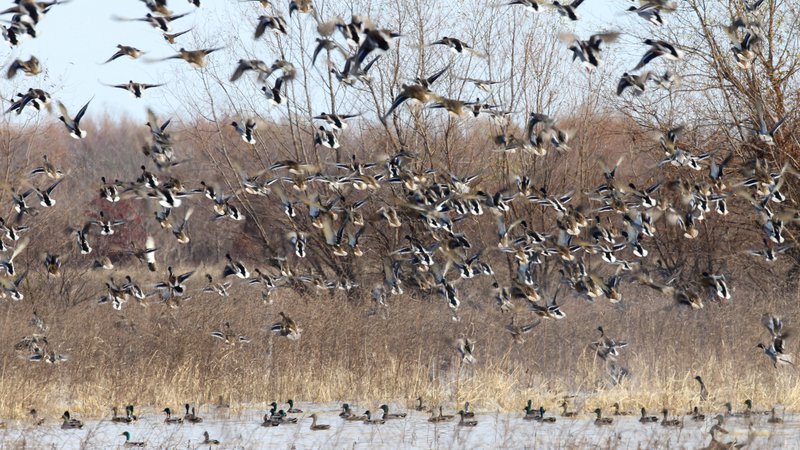
Oct. 21, 2020
Randy Zellers
Assistant Chief of Communications
POCAHONTAS — Dave Donaldson Black River WMA near Pocahontas embodies the public green timber duck hunting Arkansas is known for. And with the help of a current project slated at $1 million, it will be even more attractive to migrating waterfowl in years to come.
This 25,482 bottomland hardwood complex is surrounded by a sea of agricultural land that has attracted millions of ducks for decades. The improvements currently taking place will offer one portion of the WMA the ability to double its food value to waterfowl within the next few years.
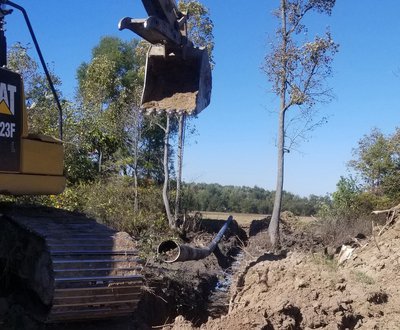
“As of Friday, contractors have buried 6,200 feet of pipe to improve water delivery to the Brookings moist-soil units, Jason Jackson, wetland program coordinator for the Arkansas Game and Fish Commission, said. “We’re also going to place a relift directly into the Black River in the next couple of weeks. And we’ve mulched and cored some levees to clean them up and fix some damage from beavers. Next spring we’ll be moving levees, building levees and fine-tuning water-control structures to fit a new design that will allow us to control water much better on the moist-soil units.”
Jackson says the 151 acres of moist-soil units traditionally have produced good amounts of food for migrating waterfowl, but the improvements going in within the next year will maximize the area’s benefit.
“Brookings has been sort of middle-of-the-road in production, and we’ll see that again this year,” Jackson said. “But I have high expectations from our work, as a biologist and as a duck hunter who uses our WMAs. This improvement is going to help us hit another gear in putting higher volumes of food on the ground for ducks as soon as next year if weather allows us to complete the dirt work in spring.”
According to Jackson, the food provided by Brookings is especially important to the landscape surrounding the WMA.
“Brookings is the largest moist-soil complex that Dave Donaldson has,” Jackson said. “Lake Ashbaugh offers roosting and loafing areas, the bottomland hardwoods offers shelter and food from invertebrates and acorns, and the surrounding agriculture offers some waste grain. Every buffet needs variety, and that’s what moist-soil gives.”
The improvements Brookings is receiving aren’t needed only at Dave Donaldson. All of the moist-soil units the AGFC owns need work to continue manipulating water correctly for maximum benefit to migrating birds. And as modern farming techniques continue to reduce waste grains, the food available on moist-soil units will become even more critical.
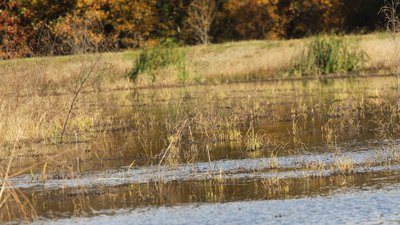
“Less waste grain is the goal of farming, but it also means less food left for ducks and other birds when they come through Arkansas,” Jackson said. “For the number of ducks that migrate to and through the state, we need a lot of groceries on the ground, and we’re not getting where we need to be with the changes we’ve seen in the last few decades. That’s why it’s so important to get the most energy benefit for the ducks out of the places we have.”
The Brookings moist-soil units on Dave Donaldson are a specially managed portion of the WMA reserved as a rest area for ducks, offering them food without pressure and a reason to stay on and around the WMA instead of moving on in their migration.
“Brookings isn’t just producing food, it’s producing a different type of food than what’s in the timber and on agricultural fields,” Jackson said.
Moist-soil unit management is not a new concept to waterfowl management, but it has taken a while to gain popularity in some areas. By manipulating native vegetation, land managers can provide extremely large amounts of food and energy for migrating ducks that has more overall benefit than a harvested agricultural field. Essentially, managers are able to “farm weeds” that ducks find very attractive.
“Rice and other agricultural crops are sort of like a candy bar to a duck, but this is the meat and potatoes of its diet,” Jackson said. “And with modern farming techniques leaving much less waste grains for the ducks by the time they arrive in Arkansas, the abundant seeds of these native plants are becoming even more attractive.”
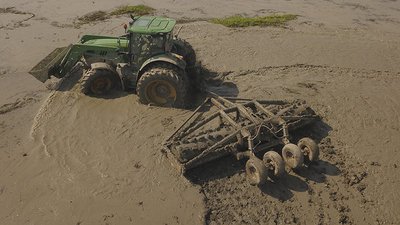
But managing these habitats is more than just letting the grass grow. Managers have to flood and drain fields at precise times and work the areas with mechanical equipment at key points in the year to maximize their benefit. That requires the right type of infrastructure as well as hard work.
“Luke Naylor, our waterfowl program coordinator in Arkansas, actually did a lot of his Master’s Degree work on moist-soil plants and the benefits they provide,” Jackson said. “His research showed that with the right management techniques, we can essentially double the amount of food these areas will produce for ducks. More food means more ducks and more ducks means happy hunters.”
Much of the funding for the Brookings project came from a $1 million North American Wetlands Conservation Act grant, a competitive grant from the U.S. Fish and Wildlife Service. But for every dollar given, the state must contribute a dollar from nonfederal sources. Jackson said this is where partners like Ducks Unlimited help to carry the load.
“DU helps us get this work done by writing and administering NAWCA grants and bringing matching contributions – including large amounts from private sources – to the table, along with in-kind donations from land and labor as well as state dollars from the AGFC to come up with a complete package for a successful NAWCA grant,” Jackson said. “The Brookings project grant also included the purchase of a 40-acre inholding at Bayou DeView and a waterfowl-habitat project on Dale Bumpers White River National Wildlife Refuge, so it wasn’t solely devoted to this WMA.”
In addition to the moist-soil work, staff also made some infrastructure changes to a section of hardwoods next to the rest area to help hold water and provide greentree reservoir habitat for ducks. A 900-acre section of hardwoods surrounded by previously built levees was improved with a new gate to hold water for ducks during winter.
“The area typically flooded anyway when the river came up, whether we wanted it to or not,” Jackson said. ‘And when the water was there, it was popular with hunters. This modification will let us have a little more control of that water to benefit waterfowl and hunters.”
Recent News
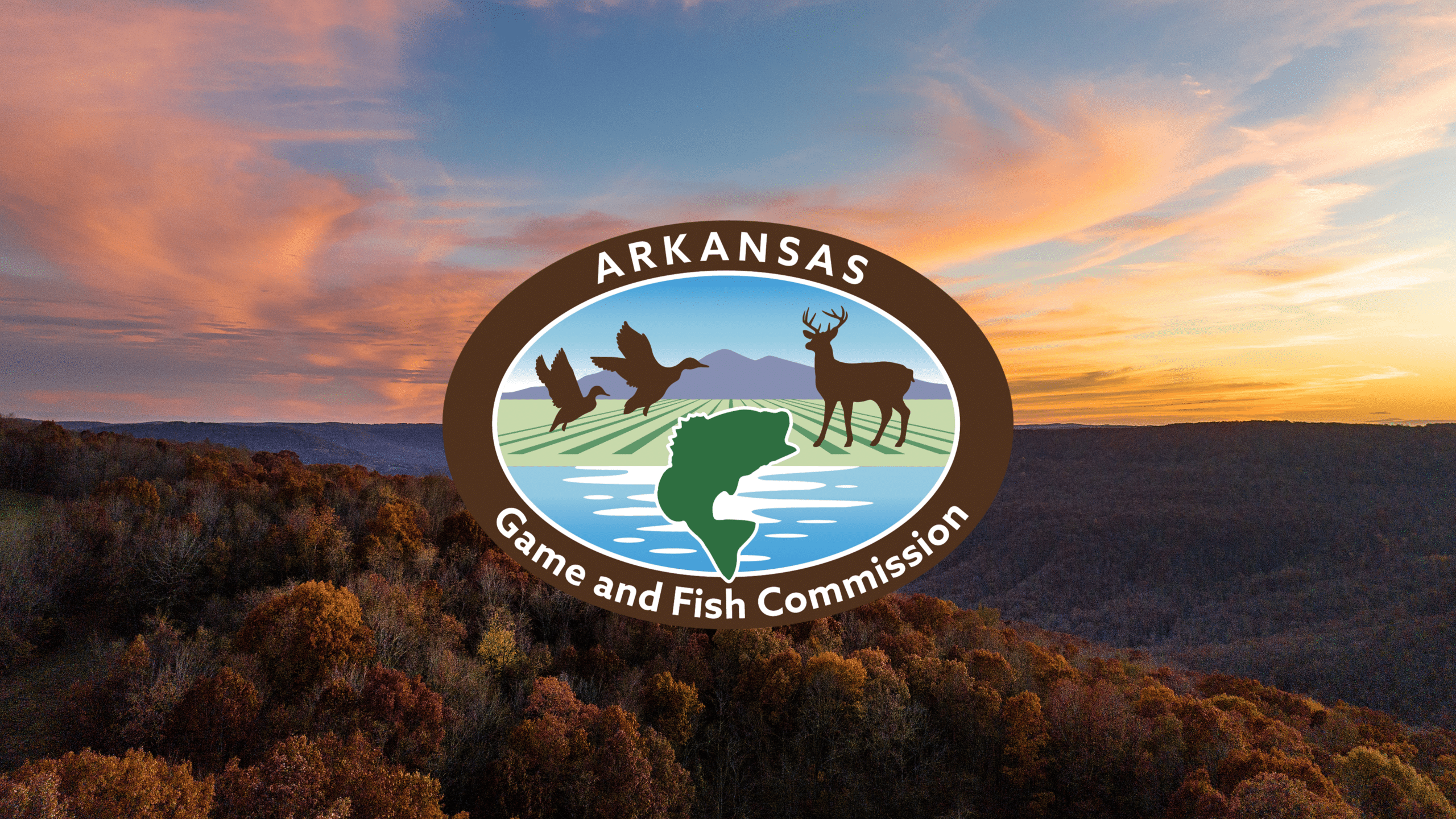
AGFC Commissioner Meeting Notice
Apr. 16, 2024
Subscribe to Our Weekly Newsletter E-mails
Don’t miss another issue. Sign up now to receive the AGFC Wildlife Weekly Newsletter in your mailbox every Wednesday afternoon (Waterfowl Reports are published weekly during waterfowl season and periodically outside the season). Fishing Reports arrive on Thursdays. Fill in the following fields and hit submit. Thanks, and welcome!

